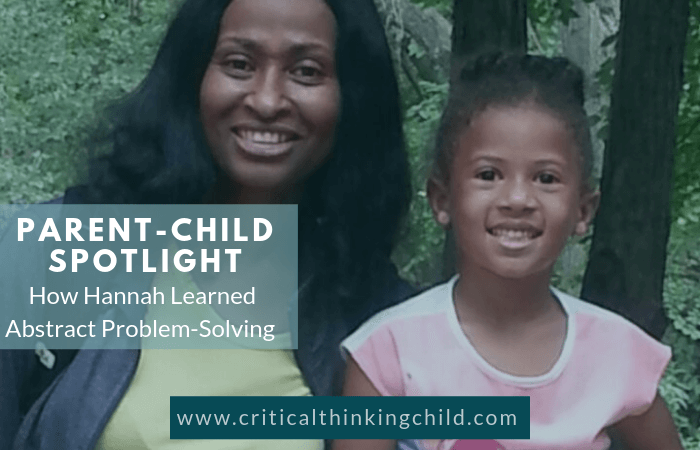Meet Phyllis Purtle, mother of 6-year old daughter Hannah, who attends Chicago Public Schools. As a former auditor for the Department of Education, Phyllis firmly believes that education is an important building block for Hannah’s future. So when Hannah started to struggle in a few areas, including abstract thinking and problem-solving, Phyllis began to look for a solution.
Helping Hannah Think Outside the Box Phyllis wanted to empower her daughter with the ability to think outside of the box. A skill she used often in her own job, she wasn’t satisfied with what she saw in the traditional school system. She noted that, “the school system is so rushed that they don’t have time to teach children to dig into a problem. Critical thinking helps them find solutions through more than one avenue.”
The only problem? While Hannah could master straightforward problems (like 2+2=4), she had difficulty getting started on word problems or diagrams that offered multiple avenues to a solution and required more abstract thought.
When Hannah began to struggle to gain admittance into one of the Chicago Public Schools Classical or Gifted Centers, Phyllis decided to look for help. She thought it would be good for Hannah to learn critical thinking at a young age, so she would have access to the fundamental building blocks for future learning. “I wanted her to work on word problems, science problems, and see different ways to look at problems,” Phyllis explained.
Seeking Support from The Critical Thinking Child Phyllis decided to work with the Critical Thinking Child after seeing us in action at a seminar held by Hannah’s preschool, Little Hands Learning Center. She enrolled Hannah in our program in hopes that we could help her look at problems in a different way.
It’s been about three months, and The Critical Thinking Child has provided support every step of the way. Hannah has learned how to break down problems into their basic building blocks. Once the problems are broken down, she then is able to figure out how to tackle them and find solutions.
While working with the Critical Thinking Child, Phyllis and Hannah practice the different techniques that they learn during sessions from home. “We practiced these in her daily schoolwork, as well as the assignments given by Critical Thinking Child,” Phyllis said. This practice helps reinforce the lessons, showing Hannah how to look at a problem and tackle it from various angles.
A New Approach to Learning
In just three months with The Critical Thinking Child, Hannah already approaches learning differently. She has the skills to analyze problems in a more abstract way, so she can find out what the problem is asking and what she needs to do to find a solution.
Prior to working with The Critical Thinking Child, Hannah was a C+ student in math. Now, after only three months, she’s an A+ student, and her confidence is soaring. But they aren’t done yet. Phyllis is excited to see this progress begin to show up in other areas in school, like the sciences, now that Hannah knows how to think critically.
Phyllis herself takes a different approach to Hannah’s learning now. She uses techniques from The Critical Thinking Child to help Hannah explore abstract thought and think outside the box on any given problem.
New doors are now open for Hannah. Phyllis is thrilled to report that Hannah has been accepted into a highly selective gifted program, which will give her the space to continue flourishing academically.
What advice does Phyllis have for other parents going through this journey? She encourages them to give The Critical Thinking Child a chance to help your child by going through the self-assessment and evaluation process to come up with a roadmap. Whatever your concerns are, we can help you create a personalized plan that will help your child succeed.



